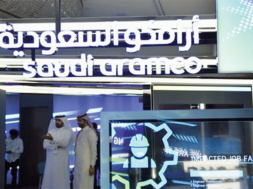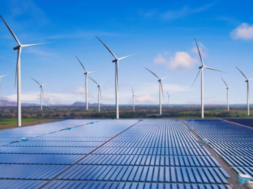
In a significant development with far-reaching implications for the energy sector, Egypt is set to revolutionize its own energy infrastructure while driving Europe towards a cleaner and greener future. The GREGY interconnector project, a groundbreaking initiative, aims to connect Egyptian solar facilities to the European energy market via Greece through a subsea electricity cable. This venture, discussed between Egypt’s Foreign Minister Sameh Shoukry and his Greek counterpart at the recent UN General Assembly, marks a crucial step in reducing Europe’s reliance on fossil fuels.
The GREGY interconnector is led by the Copelouzos Group, a prominent Greek conglomerate, in collaboration with Infinity Power, a joint venture between UAE-based renewable energy firm Masdar and Egyptian company Infinity. The proposed subsea power cable will stretch approximately 1,400 kilometers, transmitting a formidable 3,000 MW of solar and wind energy generated by Infinity Power to Greece and the broader European market.
Carlos Torres, Head of Gas and Power Markets Research at consulting firm Rystad Energy, highlights the enormous potential of the GREGY interconnector for Europe. He emphasizes Egypt’s strategic geographical advantage and superior solar energy potential, making it an ideal location for the development of solar systems compared to many European countries. A 2020 World Bank study also confirms Egypt, along with other Middle Eastern and North African countries, has the highest solar energy potential globally.
Europe’s determination to reduce its dependence on fossil fuels, coupled with geopolitical tensions and energy security concerns resulting from the Russian invasion of Ukraine, is well-documented. Egypt, on the other hand, faces its own energy challenges, evident from a series of debilitating blackouts during the summer due to years of inadequate investment in energy infrastructure.
However, Egypt remains committed to various energy projects, including the construction of its first nuclear power station. Torres suggests that these endeavors will strengthen Egypt’s position by meeting domestic energy demands while exporting surplus power.
The GREGY interconnector is part of a broader strategy to connect North Africa with Europe. Two subsea cables already transmit electricity between Morocco and Spain, with other projects in the planning stages, including proposals to deliver power from Tunisia to Italy.
If realized, the GREGY interconnector would surpass existing subsea transmission lines in length, almost doubling the size of the current record holder—an undersea link between Denmark and Britain. While it is longer, the GREGY project takes a more pragmatic approach, transporting electricity generated in Egypt to the nearest point on the European mainland, ensuring a more efficient power supply to other European nations.
In contrast, the alternative project proposed by UK-based start-up Xlinks envisions an undersea cable spanning an astonishing 3,800 kilometers along the western edge of Europe. Such long distances can result in significant energy losses during transmission, despite efforts to mitigate these losses through technological advancements.
On the other hand, the GREGY interconnector adopts a streamlined approach by delivering electricity from Egypt to the closest point on the European mainland, guaranteeing a more reliable and efficient power supply to other European countries.
As developers explore various strategies to tap into North Africa’s abundant solar resources, it becomes evident that these resources will remain a central focus for energy-hungry European governments searching for greener alternatives to Russian gas. Carlos Torres predicts an increase in high-voltage, long-distance connections in the near future, strengthening the connection between Europe and regions with substantial renewable energy potential.
The GREGY interconnector, championed by Egypt and Greece, represents a significant step towards sustainable energy collaboration and European energy diversification. It paves the way for a greener and more resilient energy future for both Egypt and Europe.











